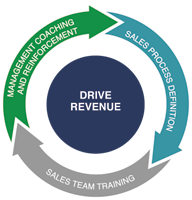 It would be great if I could sell to you. But I imagine that you will only buy from me if I can help you to sell more.
It would be great if I could sell to you. But I imagine that you will only buy from me if I can help you to sell more.
In order to do that, there are a few things I need to figure out before you’re ready to buy from me.
1. Who do you sell your stuff to? By this I mean what type of company.
2. What job titles do they usually have in the types of companies they work in?
3. What challenges do those customers have when they don’t have the things that your stuff helps them to do?
4. If nothing changes regarding the challenges that those customers face, what is the financial impact?
5. Do those prospects know enough or care enough about those challenges to make a change?
If they do, proceed to #6. If they don’t, you may need to tell them a story about someone who you worked with that didn’t realize the challenges they faced and how your stuff helped to fix it. See if they care. If they do, proceed to #6. If they don’t, move them into your call back file for later and move on to the next prospect.
6. Once those challenges are shared, and there is a reasonable amount of impetus to make a change, describe how your stuff can help them to address and fix the challenges.
See if you can help the customer to quantify the value that they could recognize with an improvement. If you can you have a qualified opportunity. If not, you may have to tell another story about how you helped someone to address the challenges and what the value was for them. If they agree, you may proceed. If not, put them in the same call back sequence as #5.
That’s it – six things I need to understand before I can effectively sell to you. And, guess what, they’re the same six things you need to understand before you can effectively sell to your prospects and customers.




